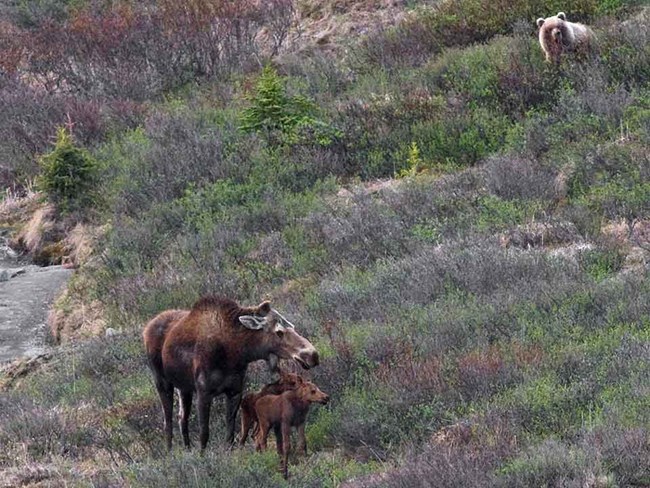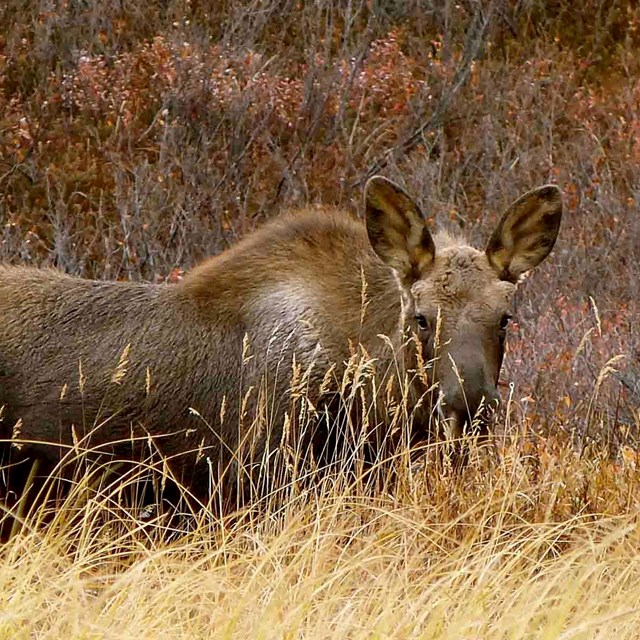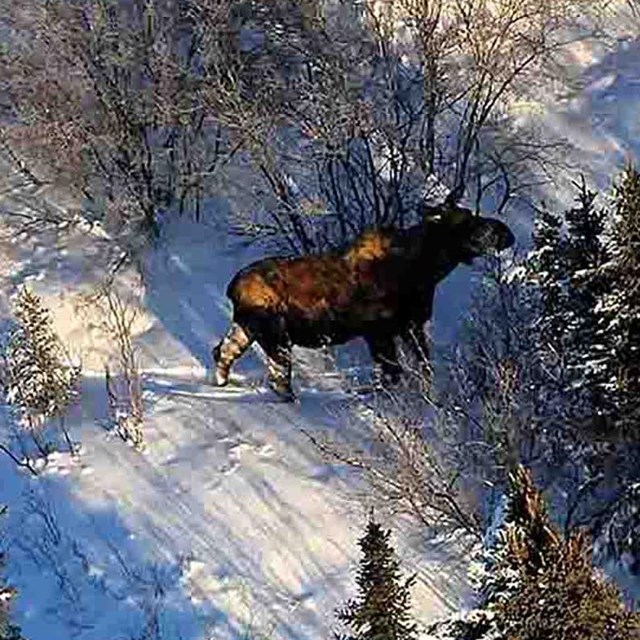
NPS
Adult moose can weigh between 700 and 1,400 pounds and are an important subsistence resource for many Alaskan families.
Monitoring Moose
-
 Arctic Network
Arctic NetworkMoose are an integral component of the boreal ecosystem in Arctic parklands.
-
 Southwest Alaska Network
Southwest Alaska NetworkAlthough not currently being monitored by the Southwest Alaska Network, we do work in cooperation with the state in fall surveys.
-
 Central Alaska Network
Central Alaska NetworkMoose are considered to be good indicators of long-term habitat change.
Last updated: July 15, 2019
